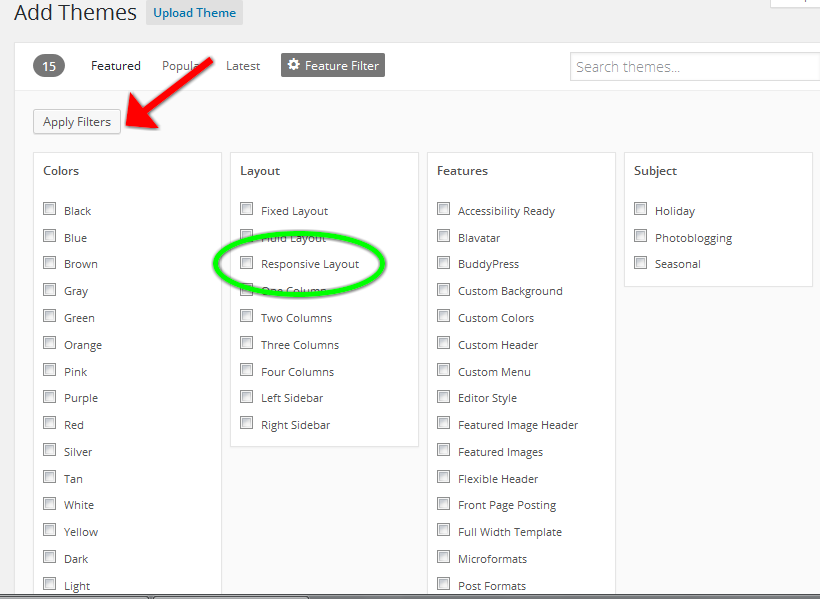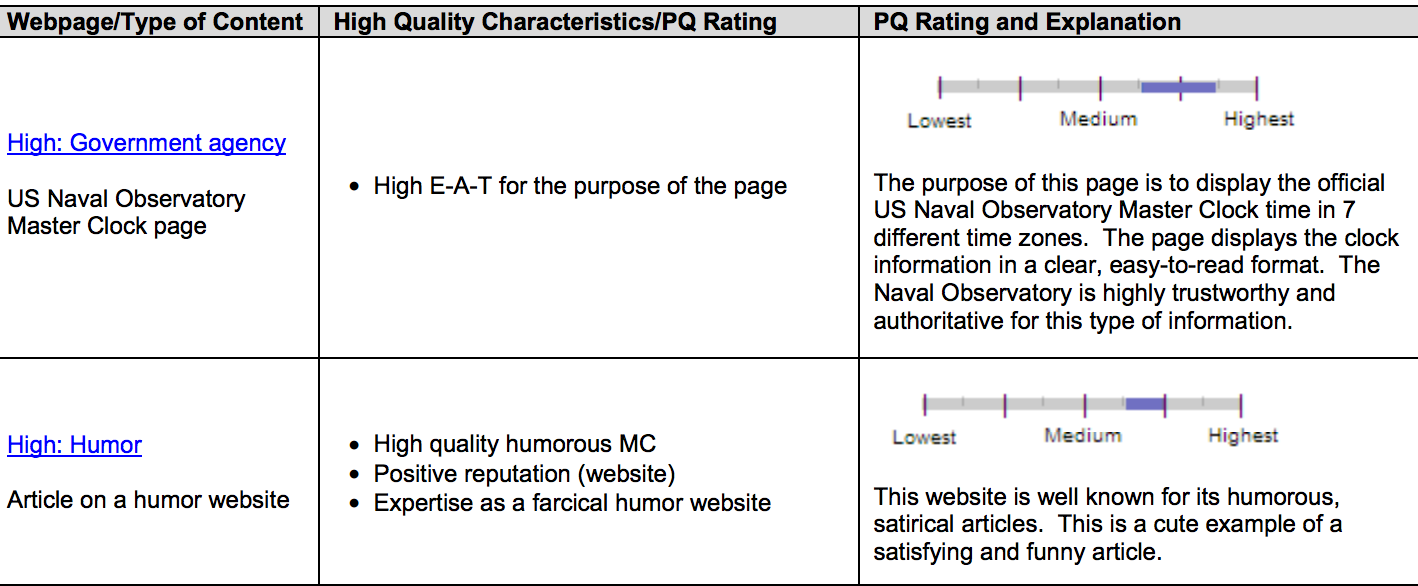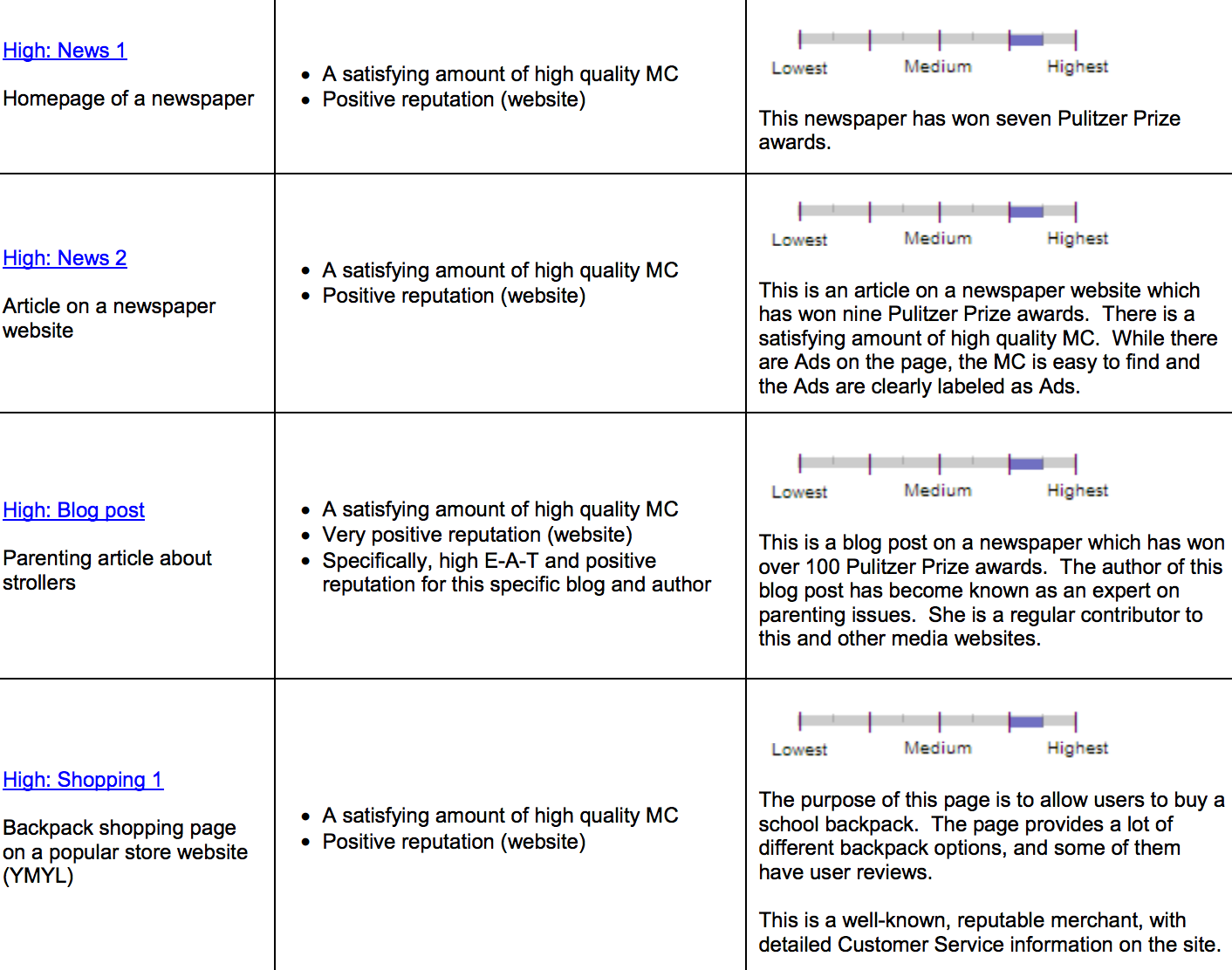The Google search engine algorithm has mostly been a mystery. Marketers have experimented to find correlations with higher search engine results page placements. And, they’ve tried to decipher implications from the occasional announcements and discussions made by the search engine giant representatives, like Matt Cutts.
So, the search engine optimization community knows the major on-page and off-page factors that contribute to a web page’s placement in Google’s rankings. But, nobody knows their EXACT contributions – especially given that there are over 200 quality rating and ranking factors.
In November 2015, Google and the search engines pulled back the curtain…
No, they didn’t reveal their ranking algorithm. Obviously. But, they did share the quality rating assurance guidelines that show ‘how they ensure that their algorithm works as they intend.’
They are essentially the rules that Google employees use to ensure that their algorithm works properly and is of a high quality.
Initially, it was a hefty 160-page document. On March 28th of this year, they updated it and released a 144-page version of all the main content that you can access here.
As I mentioned, there might have been leaks, patents and other correlations that we knew about Google previously. But, this was the first ever official peek into the search engine giant’s algorithm.
The document is broken into 4 sections and 29 chapters, with a separate section on ‘understanding mobile user needs’ (see what Google is trying to emphasize).
As a busy marketer, I understand that you can’t afford to spend a ton of time reading the document, even the main content. So, in this article, I’ll show you the important ingredients that will help you to stay on top of the said trustworthy/positive reputation website and search query guidelines by Google.
Want to remain in Google’s good graces?
I am sure you do…
Then, here are the key pointers your website and web pages must follow to hit the right notes with the quality rater.
The Google Mobile Friendly Test can be false positive…so dig deeper for mobile usability
Have you ever taken your website or web pages for a spin in the mobile-test tool released by the search engine Google?
If you haven’t already, then you can access the tool here.
Once you key in your website, press the blue ‘analyze’ button.
You’ll most likely experience immediate gratification with this green labeled message popping up….
“Awesome! This page is mobile-friendly.”
Rarely, you’ll see a red, “Not mobile-friendly,” result, like shulcloud.com did. In such a case, you’ll also get recommendations for improving your mobile user experience. If you want to improve your search quality and your quality rating then its time to become mobile friendly.
Most webmasters don’t consider further mobile optimization and testing of their website, after receiving a green pass from this Google tool. But, this puts them in danger, as it can be a false-positive, especially, if their robots.txt file is blocking files.
But, wait a second…
What has this tool got to do with Google’s search quality and the quality rating guidelines?
See, Google has dedicated 1/4th of its quality rating document to mobile search. This is evidence of Google’s aggressive chase to refine their mobile search algorithm. The quality rater guidelines emphasize exhaustive testing of mobile websites by their employees.
They also have notes on unsupported media file types, like flash, navigation and horizontal scrolling. Here’s a snippet from the introduction of the mobile user needs section.
They also have a separate “Needs Met Rating,” detailing if a search query result provides satisfaction to the mobile user experience.
Here’s the breakdown of the quality ratings.
So, your website needs to fare well across different phones, screen sizes, operating systems and internet browsers if you want to improve your search quality. Google knows that there is no ‘one-size-fits-all’ solution.
And, there’s evidence to show that treating your mobile visitors properly might give you a minor boost in your search results rankings. With the roll out of the mobilegeddon algorithmic update, mobile-friendly updates saw an average of a 12% increase in visibility.
Also, Smart Insights found that non-mobile friendly websites dropped an average of 5 places.
I can understand if your business does not have the budget/resources to dedicate resources towards creating high quality dedicated mobile websites.
In that case, I recommend that you opt for a responsive website design, for making your web page and website mobile-friendly for a better user experience. It will be easier to manage, without eating a major chunk of your business budget. And, it’s also Google’s official recommendation for a higher quality rater result.
If you’re on WordPress, you’ll find plenty of high quality responsive themes. Simply filter them by using the ‘feature filter.’
Further, I also recommend that you choose responsive templates for your email messages. 55% of emails are now opened on mobile devices. And, in their Q3 2014 study, Experian found that mobile devices also produced 39% of all unique clicks.
Career Builder performed a 3-week test, shifting to high quality responsive email design. They achieved a 15%-17% increase in email open rates, along with a 21%-24% increase in CTR. All major email marketing service providers, including Aweber and Mailchimp, provide mobile responsive templates.
For further reading on making your website mobile-friendly, please read the following articles and main content that I’ve written previously.
- The Ultimate Guide to Mobile Usability for Content Marketers
- How to Create Mobile Friendly Content
- How to Optimize Your eCommerce Website For Mobile Devices
The type of websites that are ranked highly: Your Money/Your Life Pages (YMYL)
How much of an impact can your websites main content have on your audience’s life?
If you have the potential to negatively impact users, then Google has “very high Page Quality rating standards” for you. The search engine giant coined the term, Your Money or Your Life pages (YMYL), for the pages impacting users’ happiness, health or financial stability.
Many business types fall into the YMYL category and hence need to serve high quality content. Here are some examples – eCommerce websites, Nutritionists and Fitness Centers, Financial Institutions and Insurance Companies, Medical Organizations and Therapists.
Here’s the category breakdown, by Google, of YMYL pages (along with briefs about the types of websites that fall under each category).
If your website belongs to one of the above categories and fails to deliver high quality info that inspires a good user experience, then Google will weed you out of the top spots on their search results.
Stellar user experience and mobile-friendliness are an absolute must for each and every web page you create. Here are a couple of other tips that will help you pass the Google YMYL litmus test.
1. Create an About page that instils credibility – Google wants the information on these search results pages to come from veterans who know their stuff. If your brand is one, then it’s profitable to display social proof.
Even if you’re not, it’s probably the second-most visited page on your website. So, it has search engine optimization benefits and builds an emotional connection with your visitors. On my About page, I share my life story and it has inspired over 1000 comments.
Here’s my guide on how to create a high-converting About page.
2. Include universal links to privacy policies and contact pages – As I’ve written before, the recent massive data leaks have increased user concerns over privacy. It’s cited as a major downside to the rise of personal tech.
So, if you’re serving ads and retargeting your audience, then your prospects need to know about it beforehand. Bluffing them can lead to lawsuits and will put you on Google’s bad side as its not good for their quality score or your search results. Remember the search engines want to build their search quality so they can deliver a great user experience and be the go to for information.
If you’re an eCommerce website asking for credit card information from your users, then such pages are even more important. Overall, you have to stay transparent. And, if you change your privacy policy at all, then send an email to your customers informing them about it.
Also, when you ask for private information from your users, display a statement that shows that you care about the user.
These were the website features to help your rankings on the search results…But, what about the main content on these pages?
I talk about the Google criteria for judging high quality content in the section below.
E-A-T your way to Google’s first page
I always emphasize producing in-depth content that satisfies user experience and needs.
As per Google, “The amount of main content necessary for the page to be satisfying depends on the topic and purpose of the page.”
You need to write valuable content of the highest quality, but it should also pass the Google E-A-T criterion. Here’s the breakdown of the acronym for you.
Expertise – Google favors high-level expertise from authors (depending on the topic of the page). And, for certain types of information, the search giant finds them “almost exclusively on forums and discussions.”
This does not mean that you need formal expertise on all subjects that you write, to stay on Google’s good list when it comes to the search results.
Humor, recipe and life experiences can come from ordinary people. And, they are labelled “everyday experts.” But, here are some specific topics that need formal expertise.
Authoritativeness – Remember I told you to create an About web page for your website? Shower it with testimonials and your achievements, to show that you’re an authority on your website’s subject.
In their guideline, Google mentions that the “amount of information needed for E-A-T assessment depends on the type of website.”
YMYL websites need clear and satisfying information on the content author as well as about customer service. Non-YMYL websites can get away with just providing their email addresses.
Trustworthiness – Inaccurate information can hamper a user’s life. Cite reputable sources from within your content, so that people can trust it with sensitive information. If you’re running an eCommerce website, then a safe checkout process and seal can breed trust.
Here are a couple of examples of high-quality webpages, displayed by Googles search results:
The judgement of quality is completely based on your niche. Here are comments on high-quality webpages from a blog, newspaper website and YMYL website.
If you’re just starting out, then it will take time, in the eyes of Google and your target audience, to demonstrate your authority and gain trust.
But, you need not worry about positive reputation…
As per Google Quality Rating Guidelines:
Even if you don’t have any reputation, than your page can merit a High rating. But, if your website has a negative reputation (with convincing reasoning behind the same), then Google will never give a High rating to your website.
Has your website been under negative SEO attacks or received negative reviews on social media?
Then, I recommend that you clean up your act. Here are a couple of articles that will guide you.
- The Beginner’s Guide to Monitoring, Fighting and Preventing Negative SEO
- How to Get More Online Reviews (and Deal With Bad Ones)
Building your personal brand is a great way to demonstrate your expertise. Guest posting on esteemed media publications is good, for a start. If you want more actionable tips, then read my guide.
Next, let’s talk about the types of keywords that found a separate section in the guideline…
Product Queries.
Google emphasizes that these types of commercial keywords generally get YMYL pages in SERPs. Users need high-quality EAT information to aid their product research.
The first aspect that you need to consider is the search intent behind the query.
Besides good quality score ratings and reputations, your website also needs to ensure quality customer service support to your customers. Here are 3 search results, with an explanation on why Google likes them.
Finally, let’s talk about content publishing frequency.
If the search query demands recent information, then pages with old content are considered stale and useless by Google.
On the other hand, if the query can be satisfied with both recent and “timeless” information, then you won’t get a low rating. Throw a “Last Updated” tag at the top of your article, to show that you updated the information. Brian Dean regularly follows this practice on his blog articles.
Google mentions, though, that “Freshness is generally less of a concern for E-A-T rating.” It cites news websites maintaining archives as an example of high E-A-T, although the pages might be “stale.”
This signals that webmasters need to consistently update their content. I show you 4 ways to optimize your old content here. Also, keep in mind that you don’t necessarily need to publish one new article every day (if you don’t have the resources to pull it off).
Conclusion
Google emphasizes E-A-T, especially on YMYL pages. And, mobile remains one of their top priorities. If you want to continue driving traffic from Google, then focus on these 3 aspects of your website.
Are there any other parts of the Search Quality Guidelines that you’re focusing on for your business website? Let me know in the comments.






















Comments (12)